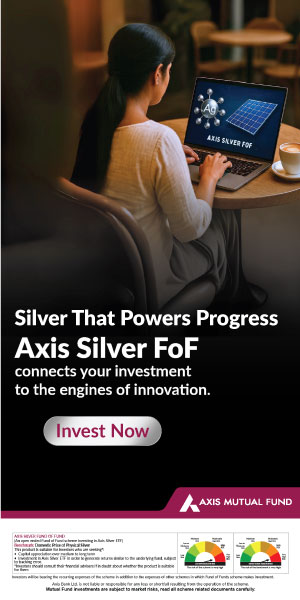I have shortlisted International Funds but why they are unrated
I am researching about International funds. I have shortlisted following funds - 1) Franklin India Feeder Franklin US Opportunities Fund - Direct Plan, 2) ICICI Prudential US Bluechip Equity Fund - Direct Plan, 3) Motilal Oswal MOSt Shares NASDAQ - 100 ETF Fund. Third fund gave good values since inception. I came to know that for investing in "Motilal Oswal MOSt Shares NASDAQ - 100 ETF Fund" you need to have a demat account & secondly you need to purchase minimum 100000 units. However on sites like Valueresearchonline, Moneycontrol & even Advisorkhoj it is mentioned that minimum investment required 10,000. Wanted to know why it is mentioned like that? Is there any other route for investing? Secondly why international funds are unrated? What is your opinion about other 2 funds?
It is important that you understand the differences between ETFs and mutual funds, as they are different in many respects, while similar in some.
- ETFs invest in a basket of stocks to replicate an index, e.g. Nifty, Sensex, BSE 100, BSE 200, CNX 500 etc. ETFs are traded on stock exchanges. Mutual funds on the other hand comprise of a basket stocks, with the objective of outperforming versus its benchmark index.
- Unlike a mutual fund, where NAV is calculated at the end of the day, the price of the ETF changes real time throughout the day, based on the actual share prices of the underlying stocks at any point of time during the day
- You need to have a demat account to invest in an ETF. On the other hand, you do not necessarily need a demat account to invest in a mutual fund.
- Fees charged by ETFs is lower than that of Mutual Funds. ETF expense ratios are around 0.5%, while mutual fund expense ratios are on an average around 2 – 2.5%.
- The objective of ETF is to track an index and reduce the tracking error as much as possible. On the other hand, mutual funds, aim to beat the index.
- You can invest in Index Funds through Systematic Investment Plan (SIP). You cannot invest in ETF through SIP.
Franklin India Feeder Franklin US Opportunities Fund and ICICI Prudential US Bluechip Equity Fund are mutual funds, whereas, Motilal Oswal MOSt Shares NASDAQ - 100 ETF Fund. To invest in Motilal Oswal MOSt Shares NASDAQ - 100 ETF Fund you need to have a demat account. Let us now clarify your confusion regarding the minimum investment amount for Motilal Oswal MOSt Shares NASDAQ - 100 ETF Fund. You should understand that, Motilal Oswal MOSt Shares NASDAQ - 100 ETF Fund is an Exchange Traded Fund and not a mutual fund. You can buy the fund in the stock exchange (e.g. NSE). The minimum number of units you can buy is 1. Since you need to have a demat account, anyway to invest in ETFs, buying ETF in the stock exchange is the most obvious method of investment, unlike where the most popular method of investment is through the AMC. The current NAV of Motilal Oswal MOSt Shares NASDAQ - 100 ETF Fund is Rs 282. Therefore, your minimum investment amount if you were to purchase one unit of the ETF is only Rs 282. You should be very clear about this.
Let us now clarify your confusion regarding the minimum 100,000 units amount. If you want to purchase the units directly from Motilal Oswal and not buy it in the exchange (e.g. NSE), then you have a buy a minimum 100,000 units. Motilal Oswal will create those units and allot to you based on the current NAVs. You may be thinking, why would anyone want to buy it directly from Motilal Oswal, instead of the stock exchange? To buy shares on the exchange, there should be a buyer and a seller. If there is no seller, you cannot buy a share. Suppose an investor wants to invest Rs 50 crores in Motilal Oswal MOSt Shares NASDAQ - 100 ETF Fund. At the current NAV, it means that the investor wants to buy 17.8 lakh units of the ETF. There may not be 17.8 lakh units on sale in the stock exchange. In that event, the investor has the option to going to Motilal Oswal directly and purchasing the required units from them. If your investment amount is not very huge, you can easily find sufficient sellers on the exchange.
Finally let us clarify your confusion, as to why you see Rs 10,000 as the minimum investment amount in various mutual fund research websites including ours. Rs 10,000 was the minimum investment amount during the NFO of the ETF. But this figure is largely irrelevant now, because the ETF is now trading in the stock exchanges. You can buy or sell even 1 unit or as many as you want. Hopefully, this clarifies your doubt about the minimum investment amount.
Let us now understand why these funds are unrated. ETFs simply track an index. Mutual funds are rated on the basis of how the fund manager performed vis a vis the benchmark. Since the objective of the ETF is not to beat the benchmark, but simply track it, that is why these funds are not rated. After all, there is no point rating an index, e.g. it is pointless to rate Sensex or the Nifty. As an investor you should be clear about your objectives and your views on the sector where the funds are investing. As regards the other US funds in your query, research agencies have different criteria for rating a fund. In Advisorkhoj we do not rate any fund. All the three funds referenced in your query are popular international funds.
POST A QUERY
Recent Queries
-
What is the benefit of mutual fund STP
Aug 29, 2019 by Nandu
-
How much to invest to meet target amount of Rs 2 Crores
Aug 26, 2019 by Dhiraj
-
Can you tell me return of various indices
Aug 18, 2019 by Dr. Ketan S Trivedi
-
Which Principal Mutual Fund scheme will be suitable for my retirement corpus
Aug 16, 2019 by Sanjay Gargish
-
In which mutual fund can I invest for short term period
Aug 3, 2019 by Chirag Agrawal
-
Can you please show the calculation method for selecting top consistent performing funds
Jul 31, 2019 by Abhishek Shah
-
How can I invest Rs 10 Lakhs
Jul 28, 2019 by Dr. Pradip Kumar Chatterjee
-
Can hybrid aggressive funds invest in large, mid and small cap stocks
Jul 28, 2019 by Pravin Jain
-
Is it possible to check rolling return versus category returns of multiple funds at a time
Aug 27, 2019 by Joel A Peres
-
Which Sundaram Mutual Fund scheme would be good for SWP for me
Jul 25, 2019 by Rabindra Chandra Bhattachara

Fund News
-
Jio BlackRock Mutual Fund launches Jio BlackRock Short Duration Fund
Jan 8, 2026 by Advisorkhoj Team
-
Jio BlackRock Mutual Fund launches Jio BlackRock Low Duration Fund
Jan 8, 2026 by Advisorkhoj Team
-
Groww Mutual Fund launches Groww Small Cap Fund
Jan 8, 2026 by Advisorkhoj Team
-
Bank of India Mutual Fund launches Bank of India Banking and Financial Services Fund
Jan 8, 2026 by Advisorkhoj Team
-
Sundaram Mutual Fund launches Sundaram Income Plus Arbitrage Active FoF
Jan 5, 2026 by Advisorkhoj Team





